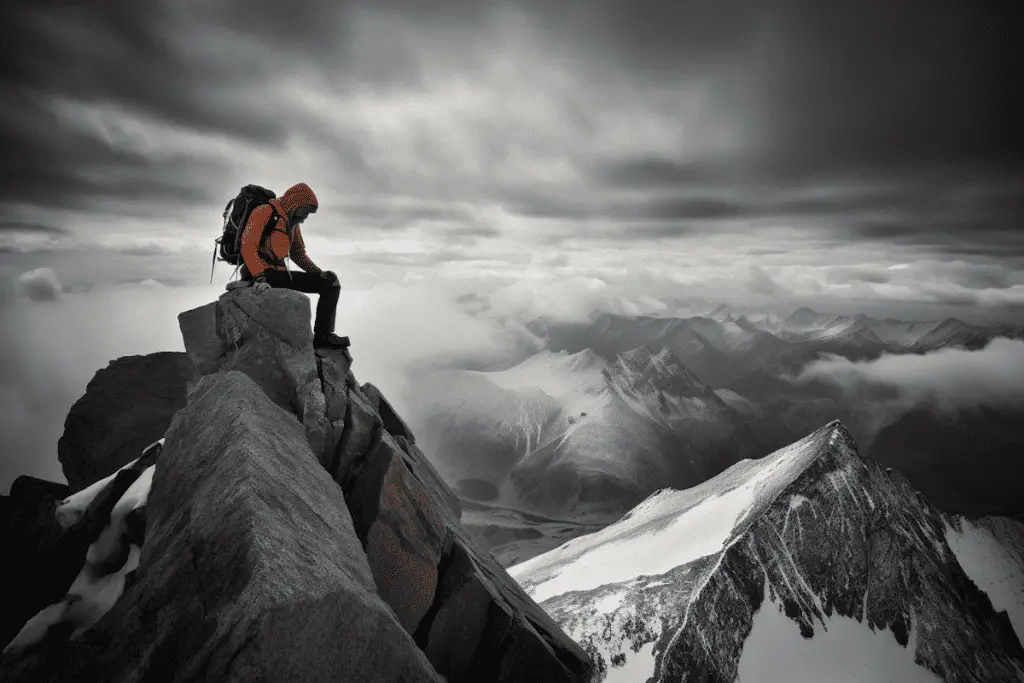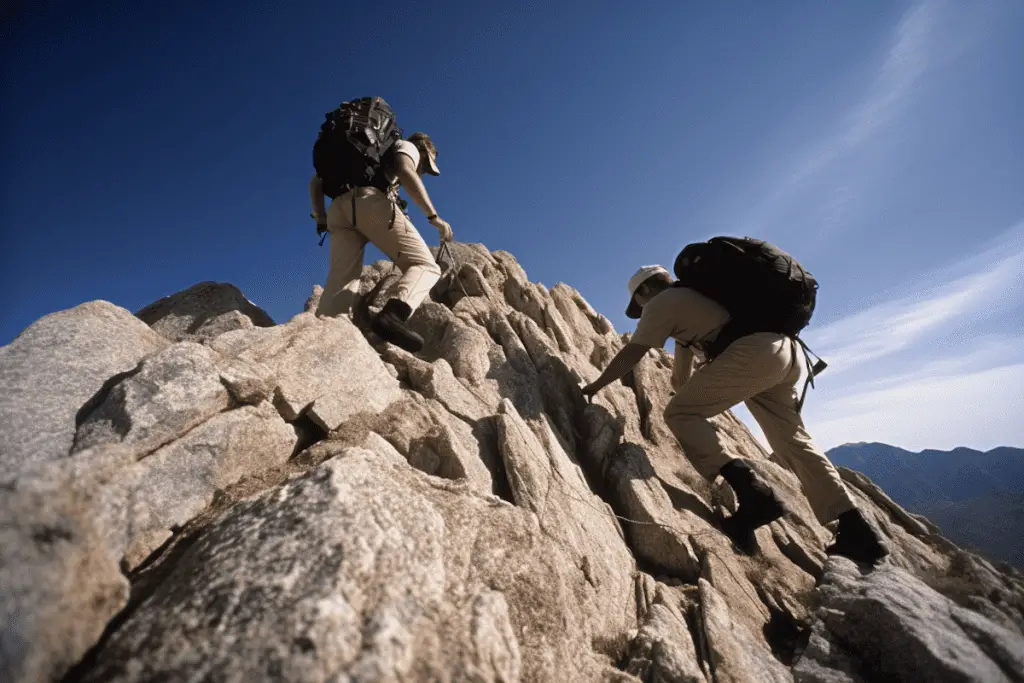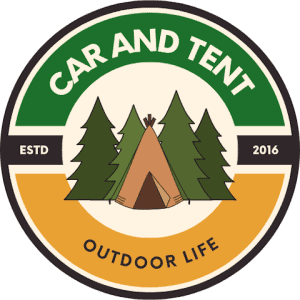We all know that camping is a classic way to reconnect with nature and unplug from our busy lives. But, have you ever thought about taking it to the next level? Literally? Let’s talk about cliff camping.
So what is cliff camping? Cliff camping is a unique outdoor activity that involves setting up a tent or a hammock on the side of a cliff or a rock face. It’s an extreme form of camping that requires a lot of skill, experience, and specialized equipment. It’s not for the faint of heart, but for those who are up for the challenge, it can be an unforgettable adventure.

Camping on a Cliff: Understanding the Adrenaline rush.
Cliff camping is exactly what it sounds like. It’s camping, but instead of pitching your tent on solid ground, you’re suspended mid-air on the side of a cliff. Yes, you heard it right! Imagine sleeping on a ledge (known as a portaledge) hanging thousands of feet above the earth, with the wide-open sky as your ceiling and the vast landscape as your front porch. Now that’s what we call an adrenaline rush!
The reason it’s so exhilarating is simple: it’s about conquering fears and pushing boundaries. Most of us, understandably, have a fear of heights. Cliff camping takes that fear and turns it into a thrilling experience. It pushes you out of your comfort zone, leaving you in awe of your capabilities and the magnificence of nature.
The rush you get from cliff camping is an intoxicating mix of fear, excitement, and a sense of accomplishment. As the sun sets, you’re surrounded by nothing but silence and the sheer beauty of nature, with the realization that you’re literally hanging off the edge of the world. As you wake up to the sunrise, the feeling of awe and peace is indescribable. It’s more than just an adventure; it’s an experience that leaves a mark on you.
Where to go Cliff Camping
Excited about cliff camping yet? You’re probably wondering where you can give this adrenaline-pumping activity a go. Don’t worry, we’ve got you covered!
Firstly, it’s important to mention that cliff camping is a regulated activity in many places due to its nature and potential environmental impact. So, it’s not something you can do just anywhere with a good cliff face. However, there are plenty of authorized locations around the globe where you can experience the thrill of sleeping on a vertical cliff.
In the United States, Yosemite National Park is an absolute dream destination for cliff camping. With its towering granite walls and spectacular views, it’s a magnet for daredevils from all around the world. You may have even heard about the famous El Capitan, a vertical rock formation in Yosemite that’s a legendary site among rock climbers and cliff campers alike.
Over in Europe, you can experience cliff camping in the picturesque landscapes of the Alps. The Dolomites in Italy offer striking mountain peaks and an exhilarating cliff camping experience. For a bit of a coastal flavor, the cliffs of Pembrokeshire in Wales provide stunning views of the Atlantic Ocean.
Australia’s Blue Mountains offer another great spot for cliff camping, featuring sandstone cliffs and breathtaking views over eucalyptus forests. And if you find yourself in South America, be sure to check out Patagonia’s magnificent mountain ranges for an unforgettable cliff camping adventure.
These locations are just the tip of the iceberg, though! There are countless other spots for cliff camping, each offering its own unique view and experience. Just remember, wherever you go, make sure cliff camping is allowed and always follow the rules and regulations in place to ensure both your safety and the preservation of these beautiful natural areas.
How To Get Started Cliff Camping
First things first, cliff camping is not a beginner’s activity. It’s important to have some experience with rock climbing and outdoor survival skills. You should be comfortable with heights, know how to use climbing gear, and be physically fit. If you’re new to rock climbing, start by taking classes at your local climbing gym or outdoor center. Practice makes perfect!
Next, let’s talk gear. You’ll need a reliable set of climbing equipment – think ropes, harnesses, and carabiners. And of course, you’ll need a portaledge – your cliffside bedroom. Remember, safety is paramount, so invest in high-quality, reliable gear. Don’t skimp on this, your safety and comfort depend on it!
Thirdly, find an experienced guide or group. Cliff camping should never be done alone, especially not the first few times. Look for local adventure companies that offer guided cliff camping experiences. They’ll ensure everything goes smoothly and safely.

Before heading out, research your chosen location thoroughly. Understand the weather patterns, know the local flora and fauna, and be aware of any safety concerns. Always tell someone about your plans, and leave them with a detailed itinerary.
Finally, remember the Leave No Trace principles. Whatever you carry in, make sure to carry it out. Respect nature, and leave the environment as pristine as you found it.
There’s no denying that cliff camping is an extreme sport, and it requires serious preparation and caution. But with the right training, gear, and attitude, it can be an absolutely unforgettable experience. Remember, your safety is paramount, and the thrill of the adventure should never compromise that. So gear up, be prepared, and get ready for the adventure of a lifetime!
Gearing Up: What You’ll Need To Get Started
Alright, gear-heads, let’s dive into the nitty-gritty details of the equipment you’ll need for cliff camping. This isn’t your typical camping trip, so the gear list is a bit different – and a whole lot more specific!
- Portaledge: This is your hanging tent, your bed for the night, and quite literally your safety net. It’s a portable ledge system that’s designed to be secure, strong, and relatively comfortable. Portaledges come in various sizes, from single to multi-person setups.
- Harness: A good quality climbing harness is crucial. This isn’t just for climbing; you’ll be tethered to your portaledge and anchor system for safety while you sleep.
- Ropes & Anchor System: You’ll need a reliable set of climbing ropes and an anchor system. The anchor system is what secures your portaledge to the cliff face. Remember, your safety depends on the reliability of these items, so ensure they’re high-quality and in good condition.
- Climbing Gear: Other essential climbing gear includes carabiners, belay devices, ascenders, and descenders. These help you ascend and descend the rope and secure your system.
- Helmet: A helmet is essential for safety. It protects you from potential falling debris and, of course, it’s a crucial piece of safety equipment while climbing.
- Sleeping Bag & Pad: You’ll need a good sleeping bag suitable for the conditions you’ll be camping in. Some climbers also like to bring a lightweight sleeping pad for extra comfort.
- Clothing: Dress in layers. The temperature can change drastically from day to night, especially on a cliff face. Quick-dry, moisture-wicking fabrics are ideal.
- Cooking & Hydration: Compact, lightweight camping stoves are perfect for preparing hot meals. Also, plan your water storage and purification carefully – hydration is key.
- First-Aid Kit: Accidents happen, so come prepared with a well-stocked first-aid kit. Make sure to include any personal medication you may need.
- Communication Devices: A cell phone may not have coverage in remote climbing locations. Consider investing in a satellite phone or a personal locator beacon for emergencies.
- Trash Bags: Remember the Leave No Trace principle. Pack trash bags to carry out any waste.
Remember, this list is just a basic guide. The exact gear you’ll need can vary based on the location, weather conditions, and your personal preferences. Always double-check your gear before heading out. Safety is key, and it starts with your equipment!
8 Tips for First-Time Cliff Campers
Thinking about taking the leap into your first cliff camping experience? That’s awesome! Here are some insider tips and tricks to help you make the most of this wild adventure.
1. Train Hard: Cliff camping isn’t just a test of your nerve; it’s a physical challenge, too. Make sure you’re in good shape, focusing on your upper body strength and endurance. And, of course, be comfortable with climbing.
2. Get Comfortable with Heights: This one might seem obvious, but if you’re uncomfortable with heights, cliff camping can be more panic-inducing than thrilling. Spend time getting used to heights in a safe and controlled environment, like a climbing gym.
3. Learn the Ropes: Get familiar with your gear. Practice setting up your portaledge and using your climbing equipment until it becomes second nature.
4. Pack Light, But Smart: Space is at a premium on a portaledge. Pack only what you need but make sure you’re well-prepared for the weather and have all the necessary safety equipment.
5. Don’t Go It Alone: Always cliff camp with an experienced partner or guide, especially for your first few trips. It’s safer, and you’ll learn a lot from their experience.
6. Keep a Positive Attitude: Things may not always go as planned. Weather can change rapidly, gear can malfunction, and sometimes, things are just uncomfortable. Keeping a positive attitude can make all the difference in your experience.
7. Safety First: No picture or thrill is worth risking your life. Always check and double-check your gear, follow all safety protocols, and know your limits.
8. Enjoy the Experience: Remember, you’re there to enjoy yourself! Take time to soak in the views, the solitude, and the sheer awesomeness of sleeping on a cliff.
Remember, cliff camping is a journey, not just a destination. There’s a learning curve, and it may take a few trips before you really feel comfortable. But once you’ve tasted the thrill of sleeping suspended on a cliffside, you might just get hooked for life! Happy camping!
